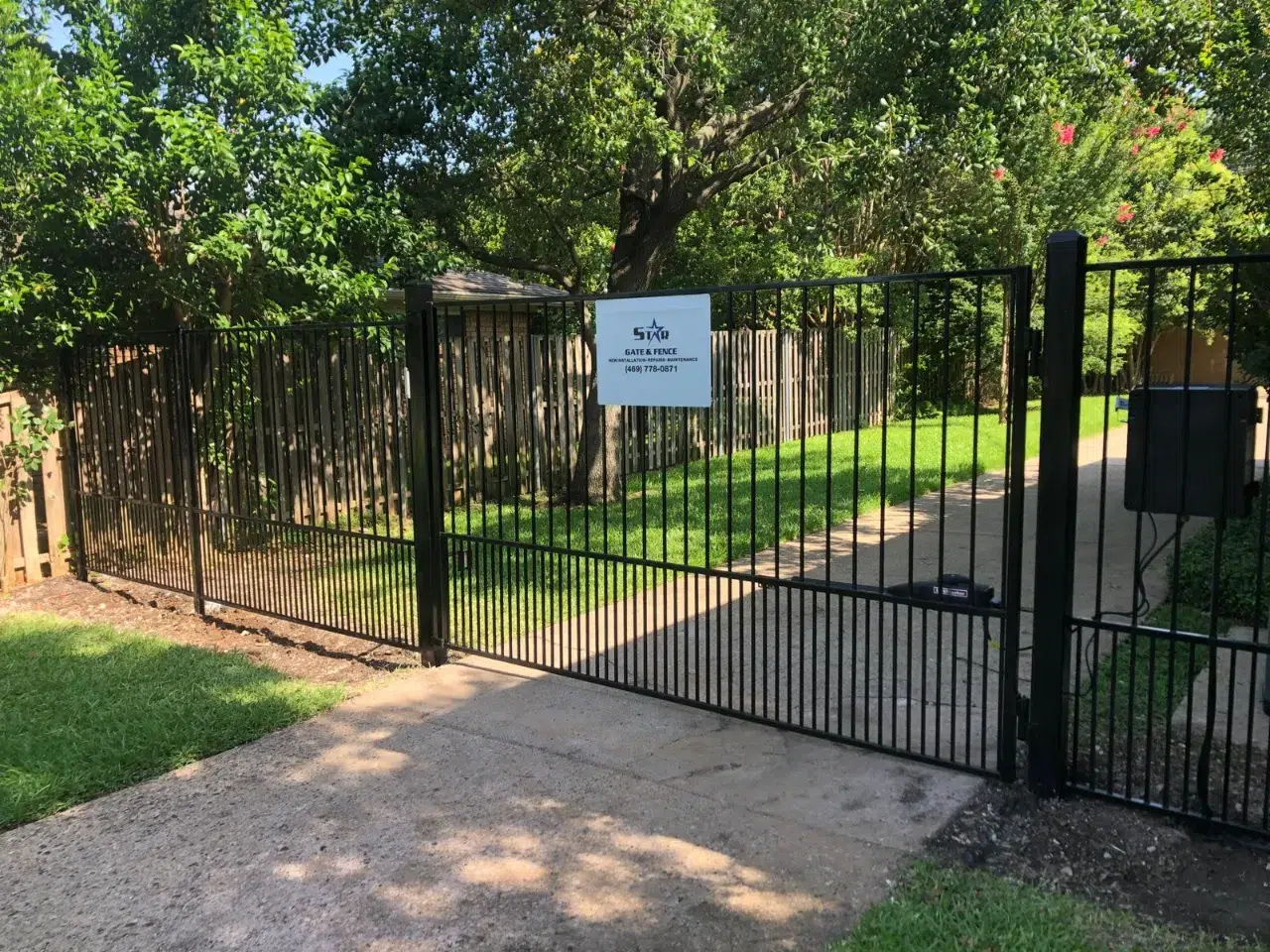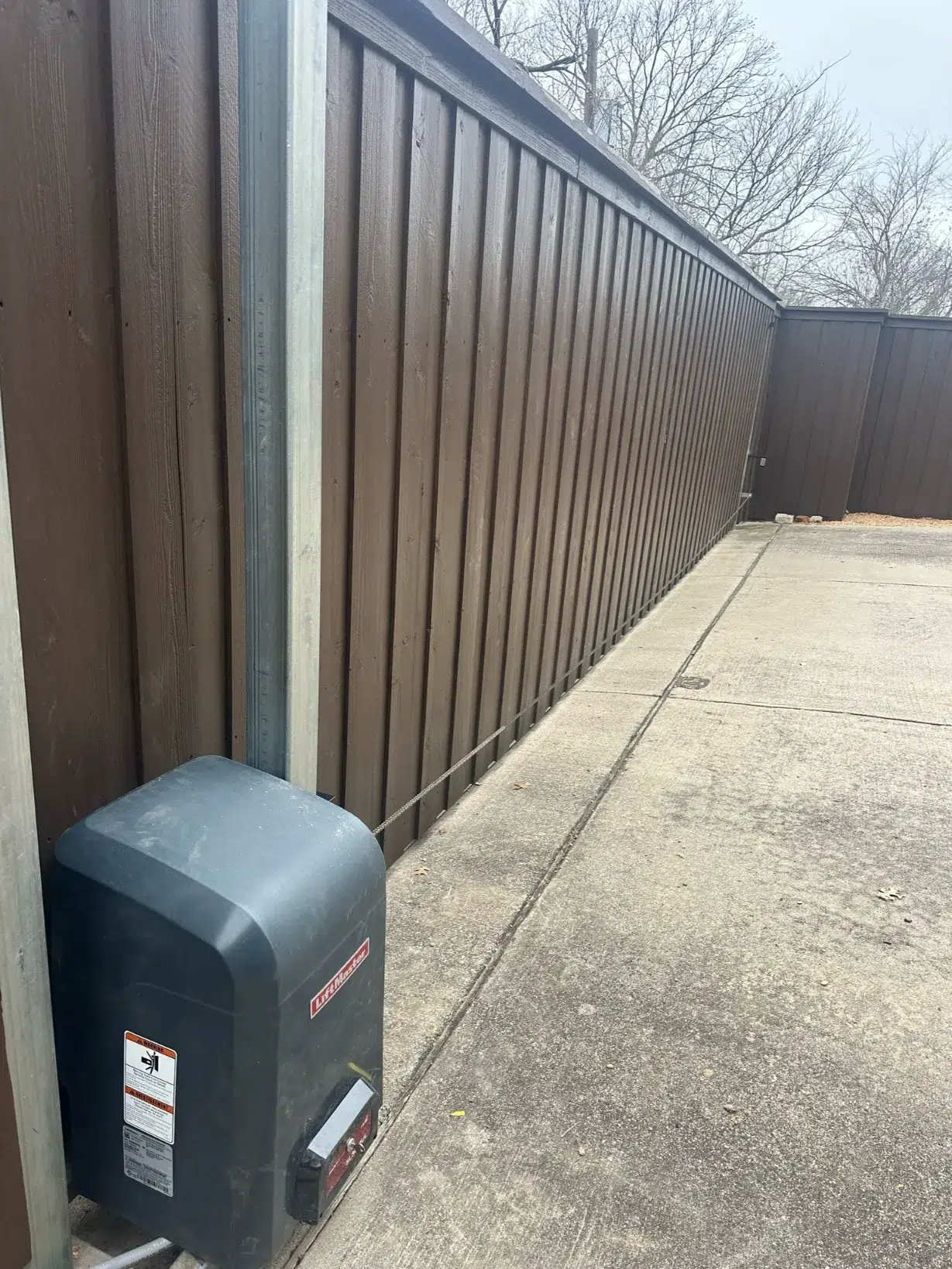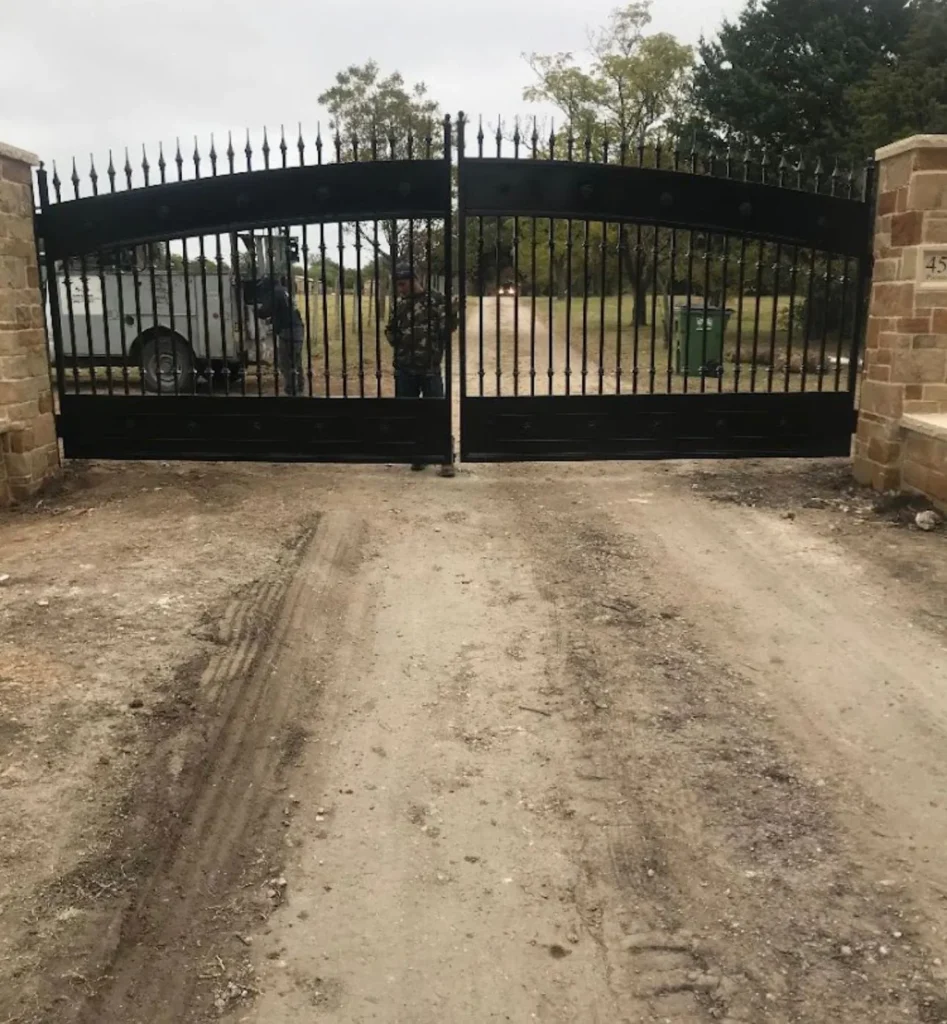Choosing between a wooden and an iron gate isn’t as simple as it first looks! This simple piece is the first thing visitors see, so it needs to look good. BUT… It also needs to work with your current home & fence design.
This can be no easy task, which is why we’ve created this handy guide for you to read and finally make up your mind.
The Pros and Cons of Iron Gates
Wrought iron gates are becoming super popular, and for good reason! This design adds instant curb appeal with its elegant, timeless look. They’re incredibly strong and can last for decades with proper care. Most styles today are actually made from wrought or steel that’s been treated to resist rust and corrosion.
The downside? They typically cost more upfront than wood. They can also feel a bit cold or formal for some home styles.
While a metal gate design is low-maintenance compared to wood, it still needs occasional rust checks and touch-ups with protective paint. But if security and longevity are your top priorities, it sure is hard to beat!

The Pros and Cons of Wooden Gates
Wooden fence gates bring warmth and natural beauty to your entryway. They blend beautifully with landscaping and can be stained or painted to match your home perfectly.
Wood is also easier to customize with different designs without spending a fortune. Many of my clients love how it ages, developing character over time.
However, it requires more TLC than iron. You’ll need to seal or stain your wooden variety every few years to prevent warping, rotting, or insect damage. Natural materials can also be less secure than high-quality iron gates since intruders might be able to break through them. In very wet climates, wooden options may not last as long as iron ones without regular maintenance.

Matching Your Gate to Your Existing Fence
Your new gate should feel like it belongs with your existing fence. Here’s what works best:
- If you have a wrought iron fence, an equivalent design is the natural choice
- For wooden privacy fences, wooden options create a seamless look
- Chain link? Either option works, but metal designs tend to upgrade the appearance
- Brick or stone walls pair beautifully with either type
- No fence yet? Choose your gate first, then match your fence to it
The most important thing is creating a cohesive look. Together, they should feel like someone planned them at the same time.
Choosing The Right Gate Style: A Mini Guide
Think about your home’s style before doing anything. Traditional homes with formal landscaping often shine with metallic materials. The clean lines and decorative scrollwork of iron complement Colonial, Victorian, and Tudor styles beautifully.
Ranch, craftsman, or cottage-style homes usually look more natural with oak or birch styles. The warm, rustic feel of wood enhances these more casual designs. If your home is modern, either gate type can work – just keep the design clean and simple. Remember, your gate should enhance your home’s character, not fight against it!
Watch This: A New Iron Gate Installed
So, you’re still unsure about which type you want? Maybe this neat video of one of our perfectly installed gates could change your mind.
So, Which Is Right For You?
The perfect option depends on your priorities:
Choose iron for security, longevity, and minimal upkeep—ideal if you have a formal home style or a matching metal fence.
Go with wood if you value warmth, customization, and lower upfront costs, especially with craftsman homes or wooden fences.
Your climate and maintenance willingness should be the tiebreakers!
Frequently Asked Questions
How strong is an iron gate?
Metal entry barriers offer exceptional structural strength, withstanding up to 2,000 pounds of force depending on thickness and design. These installations provide incredible security against intruders and environmental stressors. Their tensile strength significantly outperforms wood , making them ideal for high-security needs where durability is important.
How do you protect an iron gate?
Protective maintenance involves regular cleaning with mild soap mixtures followed by intense drying. Apply quality rust-inhibiting primer and exterior-grade metal paint every 2 years. Consider galvanization for new installations. Periodic lubrication of moving parts prevents mechanical failure, while applying clear sealant offers additional defense against moisture penetration and corrosive elements.
How long does it take for an iron gate to rust?
Untreated metal structures begin oxidizing within 4-5 days in humid environments. Initial surface corrosion appears within 1-3 months, while significant structural deterioration requires 1-3 years. Climate drastically affects this timeline—coastal properties experience accelerated deterioration versus arid regions. Quality protective coatings extend service life by 10-15 years when properly maintained.

